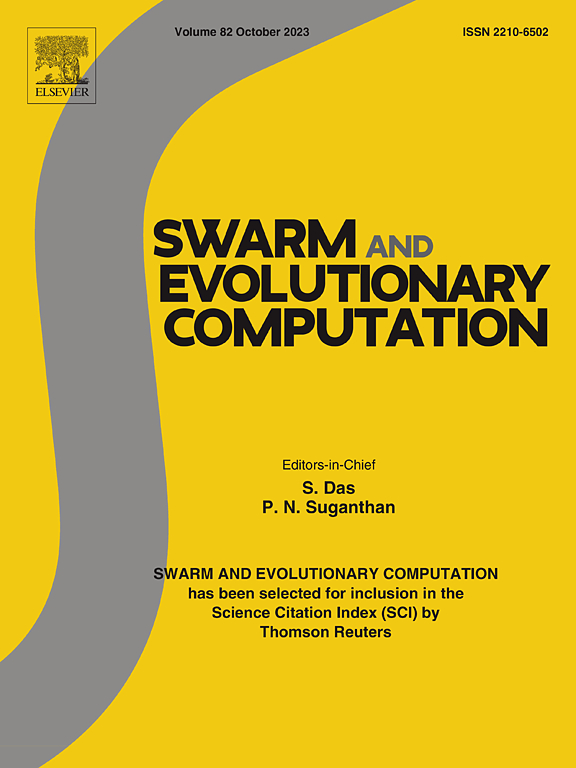PF-MAAC: A learning-based method for probabilistic optimization in time-constrained non-adversarial moving target search
IF 8.2
1区 计算机科学
Q1 COMPUTER SCIENCE, ARTIFICIAL INTELLIGENCE
引用次数: 0
Abstract
This paper investigates the multi-robot efficient search (MuRES) problem with a focus on maximizing the probability of capturing a moving target within a predefined time constraint. Given the complexity of the MuRES problem, traditional optimization algorithms often result in significant computational overhead. As a result, learning-assisted intelligent optimization, particularly reinforcement learning (RL), has emerged as a prominent research trend, providing more efficient and adaptive solutions. However, the non-additive nature of the objective to maximize capture probability complicates the direct application of canonical RL-based algorithms. To address the challenge, we propose the probabilistically factorized multi-agent actor-critic (PF-MAAC) algorithm, which serves as a lightweight solution aligned with probability theory specifically designed to handle the complexities of the maximal capture probability objective. PF-MAAC is composed of (1) a generalized temporal difference (GTD) module to establish the temporal-difference relationship of the central value function, (2) a probability-based factorization (P-FAC) module to decompose the central value function into individual ones in a probability-compliant manner, and (3) an extended policy gradient (EPG) module which updates each robot’s actor-network based on the decomposed individual value function. Comparative simulations across various MuRES test environments demonstrate that PF-MAAC outperforms state-of-the-art methods. Furthermore, we successfully deployed PF-MAAC in a real multi-robot system for moving target search in a self-constructed indoor environment, achieving the satisfactory results for different time constraints.
求助全文
约1分钟内获得全文
求助全文
来源期刊

Swarm and Evolutionary Computation
COMPUTER SCIENCE, ARTIFICIAL INTELLIGENCEC-COMPUTER SCIENCE, THEORY & METHODS
CiteScore
16.00
自引率
12.00%
发文量
169
期刊介绍:
Swarm and Evolutionary Computation is a pioneering peer-reviewed journal focused on the latest research and advancements in nature-inspired intelligent computation using swarm and evolutionary algorithms. It covers theoretical, experimental, and practical aspects of these paradigms and their hybrids, promoting interdisciplinary research. The journal prioritizes the publication of high-quality, original articles that push the boundaries of evolutionary computation and swarm intelligence. Additionally, it welcomes survey papers on current topics and novel applications. Topics of interest include but are not limited to: Genetic Algorithms, and Genetic Programming, Evolution Strategies, and Evolutionary Programming, Differential Evolution, Artificial Immune Systems, Particle Swarms, Ant Colony, Bacterial Foraging, Artificial Bees, Fireflies Algorithm, Harmony Search, Artificial Life, Digital Organisms, Estimation of Distribution Algorithms, Stochastic Diffusion Search, Quantum Computing, Nano Computing, Membrane Computing, Human-centric Computing, Hybridization of Algorithms, Memetic Computing, Autonomic Computing, Self-organizing systems, Combinatorial, Discrete, Binary, Constrained, Multi-objective, Multi-modal, Dynamic, and Large-scale Optimization.
 求助内容:
求助内容: 应助结果提醒方式:
应助结果提醒方式:


